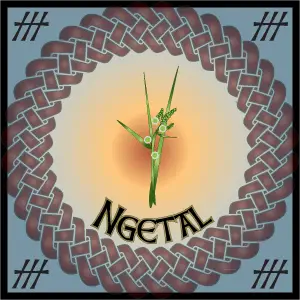It is widely believed in academic circles that reed is a modern, neo-pagan introduction to the Ogham, much like the tree calendar itself.
It was first promoted as an Ogham by Robert Graves in his book The White Goddess. However, the reed’s importance to Celtic life and folklore are indisputable.
Reed gained a reputation as a protective tree from its use as thatch for the rooftops homes.
For this reason it was also made into talismans and charms believed to protect the wearer from evil. Mats were often woven out of reeds which gave the house a sweet smell, associating the reed with cleansing the home.
Scholarship
The Druids also used reeds to make writing implements and paper, thus associating the reed with knowledge, scholarship and wisdom.
Physicians would use reeds as tools for administering treatments but arrows, the weapons of death, were also made out of reeds. Because of these two contrasting uses the reed gained an association with both death and healing.
Souls of the ‘otherworld’ join the living
Ngetal, Ng – Considered a tree by the Druids because of its deep root system, reed represents the thirteenth letter of the ogham alphabet, Ngetal, and the twelfth month of the Celtic tree calendar.
Following along with the reed’s association with death, the Celtic tree calendar has the reed representing the dates between October 28th and November 24th, the time of Samhain (now known as All Saints Day, which follows Halloween) when the door to the Otherworld would dissolve allowing the souls of the dead to join the living.
During this time, fires were burnt and feasts were held in which places were set for dead loved ones thought to join in the festivities.
This was also a time when livestock would be slaughtered ready for the cold winter months, and believed by some to be the end and beginning of the Celtic year.
In Celtic mythology the reed is most associated with Brigid, goddess of poetry, smithcraft and healing. Brigid’s crosses were traditionally woven from reed and are still made today as crosses of St Brigid, hung inside homes for protection from fire and evil spirits.
